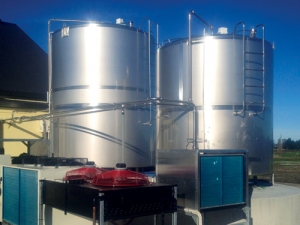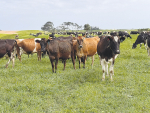New milk cooling regulations applying from June 1, 2018 mean the countdown is on to ensure systems are up to speed.
Milk held in the vat must be cooled to 10 degrees C or below within four hours of the start of milking, or down to 6 degrees C or below within six hours, and within two hours of the completion of milking. The milk must be held at 6 degrees C or below until collection or the start of the next milking, and must not exceed 10 degrees C during subsequent milkings.
The latter parts of the above rules are interesting given that the main part of the plant we use is in the shape of the milk vat.
Looking at a typical New Zealand set-up we normally see tanks configured to stand vertically, and they are almost universally single skinned. Undoubtedly cheap to produce, this layout has serious disadvantages, not least a reduced cross section which sees a large column of milk 'stacked' vertically, which is hard to invert and creates pockets of milk at different temperatures throughout the tank. Such a tall tank is unlikely to be housed away from the elements, particularly sunshine, resulting in warm-up in some areas.
Further, although the smaller footprint of a vertical vat means it takes up less floor space, it can be inherently unstable in an earthquake.
By contrast, the typical European style equipment turns things by 90 degrees and starts by using a horizontal vat, with a much greater footprint with inherent stability, and a much bigger cross section, which largely eliminates any variation in milk temperature throughout the vat, particularly as most vessels have two- or three-paddle agitation. This latter function is key to ensuring that there are no areas of 'super-chilling' which might occur when using iced water, which can result in milk being frozen and suffering a reduction in quality.
But the key point of difference between the northern hemisphere and our gear here in the south is the construction of the vat, which will always be double skinned and have a void filled with up to 100mm of polyurethane foam type insulation material which will need to meet EN R13732 regulations.
This serves to save energy, remembering milk cooling can be up to 30% of a dairy's costs by holding cooled milk at a constant temperature largely unaffected by climatic conditions. European users of this type of technology can hold milk without any form of secondary refrigeration for up to 24 hours with only a 1 degree C rise in temperature.
So the next time your dairy company man calls to tell you what a good job they've been doing, ask him when they're going to supply double-skinned, insulated vats.


















